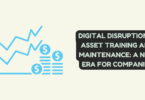
Primary SEO Factors
- Domain Factors
- Page-Level Factors
- Site-Level Factors
- Backlink Factors
- User Interaction
- Special Google Algorithm Rules
- Brand Signals
- On-Site Webspam Factors
- Off-Site Webspam Factors
- Conclusion
- SEO Tools For Agencies
- Publish High-Quality Content
- Keyword Usage
- Freshness
- Make Your Site Mobile-First
- Mobile Usability
- Enhance Page Experience
- Improve Your User Experience
- Site Architecture
- Core Web Vitals
- Create a Secure Website (HTTPS)
- Ad Experience
- Optimize Your Page Speed
- Master Your On-Page Optimization
- Metadata
- Schema
- Featured Snippets
- Google Discover
- Internal Link Structure
- Earn Relevant & Authoritative Links
- Local
- Relevance
- Distance
- Prominence
Link building is a crucial part of any successful SEO strategy. Without links pointing to your website, it’s difficult to achieve a high ranking in search engine results pages (SERPs). In this article, we’ll cover several link-building strategies and technical SEO issues that you need to address to improve your website’s ranking.
The first critical link building strategy is to create valuable content. If your website doesn’t have anything worth linking to, it’s unlikely that other websites will want to link to it. By creating informative and engaging content, you’re giving other websites a reason to link to you.
However, simply creating great content isn’t enough. You also need to actively promote your content to increase its visibility. One way to do this is through guest posting. Reach out to other websites in your niche and offer to write a guest post for them. In return, you can include a link back to your website in the author bio or within the content.
Another way to get links to your website is through broken link building. This strategy involves finding broken links on other websites and suggesting that they replace them with a link to your website. You can use tools like Check My Links or Broken Link Checker to find broken links.
Matt Cutts, the former head of Google’s Webspam team, suggests a clever way to get links placed in articles that already have links going to them. During your email outreach for guest posts, if you get a rejection, don’t lose hope. Instead, switch gears and ask if they can insert a link to one of your articles instead. This is a much easier task and takes only 20 seconds for them to do.
The third critical link building strategy is to utilize a free platform called HARO (Help A Reporter Out). HARO is a website that allows you to access journalists who are looking for expert quotes to add to their articles. When they use your quote, you’ll get a link. The great thing is that these journalists are often writing for huge trustworthy websites.
HARO link building is all about consistency. Every day you’ll get emails with tons of expert quote opportunities. You want to jump on them right away.
Now, let’s move on to the technical SEO checklist. Technical SEO is all about making life easy for Google to access your website. There are three primary technical SEO issues that you’re very likely to face.
The first issue is page speed. Google wants its users to be happy, and that means serving up web pages that load quickly. Use a free tool like Pingdom to check your load time. Faster is always better, but less than two seconds is the goal. There are various best practices you can use to improve page speed, such as getting on a fast hosting service. We recommend WPX Hosting.
Next, get a content delivery network, also known as a CDN. The most popular is the free version of Cloudflare. And also make sure to resize your images. If you’re using HD images on your site, shrink them down before you upload them so your users aren’t loading gigantic files every time they visit your site.
In addition to being fast, you also want to be mobile-friendly. You can use Google’s free mobile-friendly tester to make sure Google is okay with the smartphone layout of your website, but also open up your site on your phone and have a look yourself. You shouldn’t have images bleeding off the page, weird-sized fonts, or the need to side-scroll whatsoever.
Another factor to consider when looking at the job market is the impact of automation and artificial intelligence (AI). Over the past few years, we have seen a significant increase in the use of automation and AI in various industries. While this has undoubtedly led to increased efficiency and productivity, it has also resulted in job losses in some areas.
For example, in the manufacturing industry, many tasks that were previously performed by humans are now being carried out by robots. Similarly, in the financial industry, automated systems are increasingly being used for tasks such as stock trading and data analysis, which were previously performed by humans.
This trend is likely to continue in the coming years, and it is important for job seekers to be aware of the potential impact on their chosen field. While some jobs may become obsolete, new jobs will also be created as a result of technological advancements. Therefore, it is important to be adaptable and willing to learn new skills to remain competitive in the job market.
In addition to technological advancements, globalization is also having a significant impact on the job market. With the increasing interconnectedness of the world, many companies are now operating on a global scale. This has led to increased competition for jobs, as companies can now source talent from all over the world.
Furthermore, the rise of outsourcing and offshoring means that many jobs that were previously performed locally are now being moved to other countries where labor is cheaper. This has led to job losses in some areas, particularly in industries such as manufacturing and customer service.
However, globalization has also led to increased opportunities in some fields, such as international business and trade. Therefore, it is important to be aware of the impact of globalization on the job market and to be willing to adapt to new opportunities.
Finally, the current economic climate is also an important factor to consider when looking at the job market. In recent years, we have seen significant economic fluctuations, with periods of growth followed by periods of recession.
During periods of recession, job opportunities are often scarce, and competition for available jobs can be intense. Therefore, it is important to be aware of the current economic climate when considering job opportunities and to be prepared to be flexible in terms of salary expectations and job responsibilities.
In conclusion, the job market is constantly evolving, and there are a variety of factors to consider when looking for employment opportunities. While factors such as education and experience are important, it is also important to be aware of trends such as technological advancements, globalization, and economic fluctuations.
By staying informed and adaptable, job seekers can position themselves for success in an ever-changing job market.






